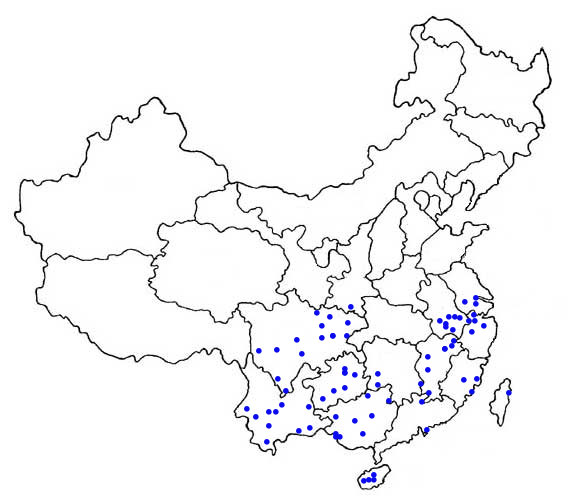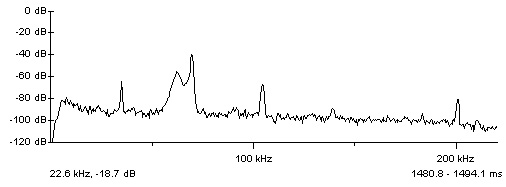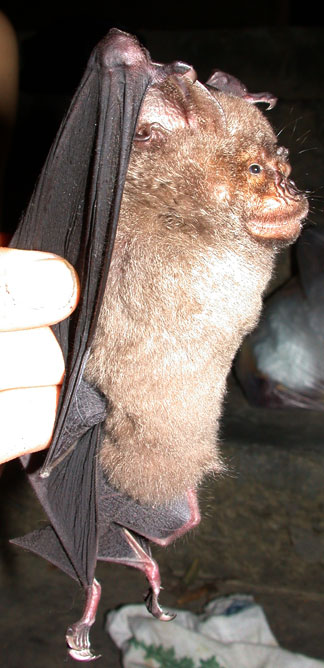Hipposideros armiger
Morphological description Life history Distribution Habitat Roost sites and roosting patterns Emergence and flight pattern Foraging behaviour Echolocation calls Status and protection
Morphological Description
· Dorsal fur is grey-brown. Ventral fur is grey-brown or black-grey.
· Juveniles are darker than adults.
· It is a large species of hipposiderid bat. Forearm length 86.6 - 96.6mm (as given by Jones, in South China ).
· Four supplementary leaflets on the noseleaf are characteristic, with the outer leaflet is smallest (right hand picture).
· Body masses in China 45 g-71.2 g.
Bats from India had a wing area of 0.037 square m, a wing span of 0.49 m, wing loading of 9.5 N/square m, and an aspect ratio of 6.4 (Thabah, 2006).
Life history
· Little known
Distribution
The distribution in China is shown by the dots on the map (as given by Zhang et al. 1997).

Habitat
· Seen feeding in cleared spaces in woodland, gardens, between avenues of trees (Bates & Harrison, 1997). Seen foraging around street lights in Sichuan. Circles around trees, and uses night roosts such as buildings for shelter (Scully, 1887).
· Higher elevation areas are used by great leaf-nosed bats in India, the altitude ranging from 1030 metres - 2031 metres (Bates & Harrison, 1997). In Yunnan , we also found this species at 2270 metres. But in China the species is also found in lowland areas, such as those in Hong Kong and Guangdong.
Roost sites and roosting behaviour
· Caves are the typical diurnal roosts. Other night roost sites include houses, sheds, and old buildings. One roost in a tunnel over a waterway in Sichuan contained thousands of bats.
· This species often shares their roosts with other bat species. A maternity site was shared with Hipposideros pratti in Sichuan.
Emergence and flight pattern
· Emerges in the early evening.
· Flight is rapid and agile, often circling around trees.
Foraging behaviour
· In Meghalaya, India the diet comprised 56.3-100% Coleoptera between December-April, with up to 16.2% Lepidoptera, 27.5% Diptera (Thabah, 2006). In Malaysia it also ate mainly Coleoptera (36.7%) and Hymenoptera (28.8%) (Zubaid 1988).
Echolocation calls
The echolocation call is a short constant frequency signal, with a brief frequency-modulated start and tail.
To listen to the call of the great leaf-nosed bat click here
Size of sound file: 152 kb
Call frequencies: frequencies of most energy at 68 kHz in Guangdong, 68-68.8 kHz Guangxi, 64.8 kHz at 3 sites in Yunnan, 67.4-69.4 kHz in Sichuan. call frequencies are lower than those reported for Meghalaya, India (74.1 kHz: Thabah 2006).

Status and protection
· There is no estimate the of the population size of this species in China, though it can be common in southern China.
· Great leaf-nosed bats are at LR/lc, assessed by the Red List of Threatened Species (IUCN, 2006) and are not listed in the Law of the People's Republic of China on the Protection of Wildlife in 1989.
· Caves and old buildings should be protected as their roosting habitats.
